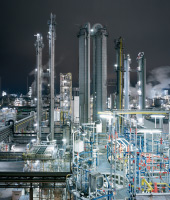Strategy of the WACKER Group
Our vision and five strategic goals remain in place. Taken as a whole, they form the basis for our strategy and embody what we are striving to achieve. Our strategy is focused on profitable growth and attaining a leading competitive position in most of our business fields, while observing the principle of sustainable development. Our five strategic goals are:
- WACKER products and solutions are our customers’ first choice.
- We want to be one of the world’s best employers.
- We tap new markets via product and process innovations for tomorrow’s world.
- We continuously increase our company’s value.
- Our responsibility as a company extends beyond our business activities.
For further information, please visit our website at: www.wacker.com.
After a phase of large investments (2005 to 2012) in the expansion of our global production capacity – especially large installations for producing upstream products – we initiated the next strategic step in 2013. The strategic focus is on improving profitability and generating a positive net cash flow. This strategy is supported by a stringent cost-monitoring program at every business division. In 2014 alone, WACKER achieved cost savings of € 200 million, attributable to the positive impact from increased production volumes. With the exception of 2015, capital expenditures for the coming years will remain at or below the amount of depreciation. The focus of investment is on facilities for manufacturing downstream products. On the product side, we have intensified our efforts to expand our market share for high-value products in the areas of health, personal care, medicine, electronics, automotive engineering and energy.
Our strategic goals are oriented toward the highly promising fields of energy, urbanization and construction, digitization, and rising affluence in emerging countries. WACKER offers products that will embrace these global trends.



